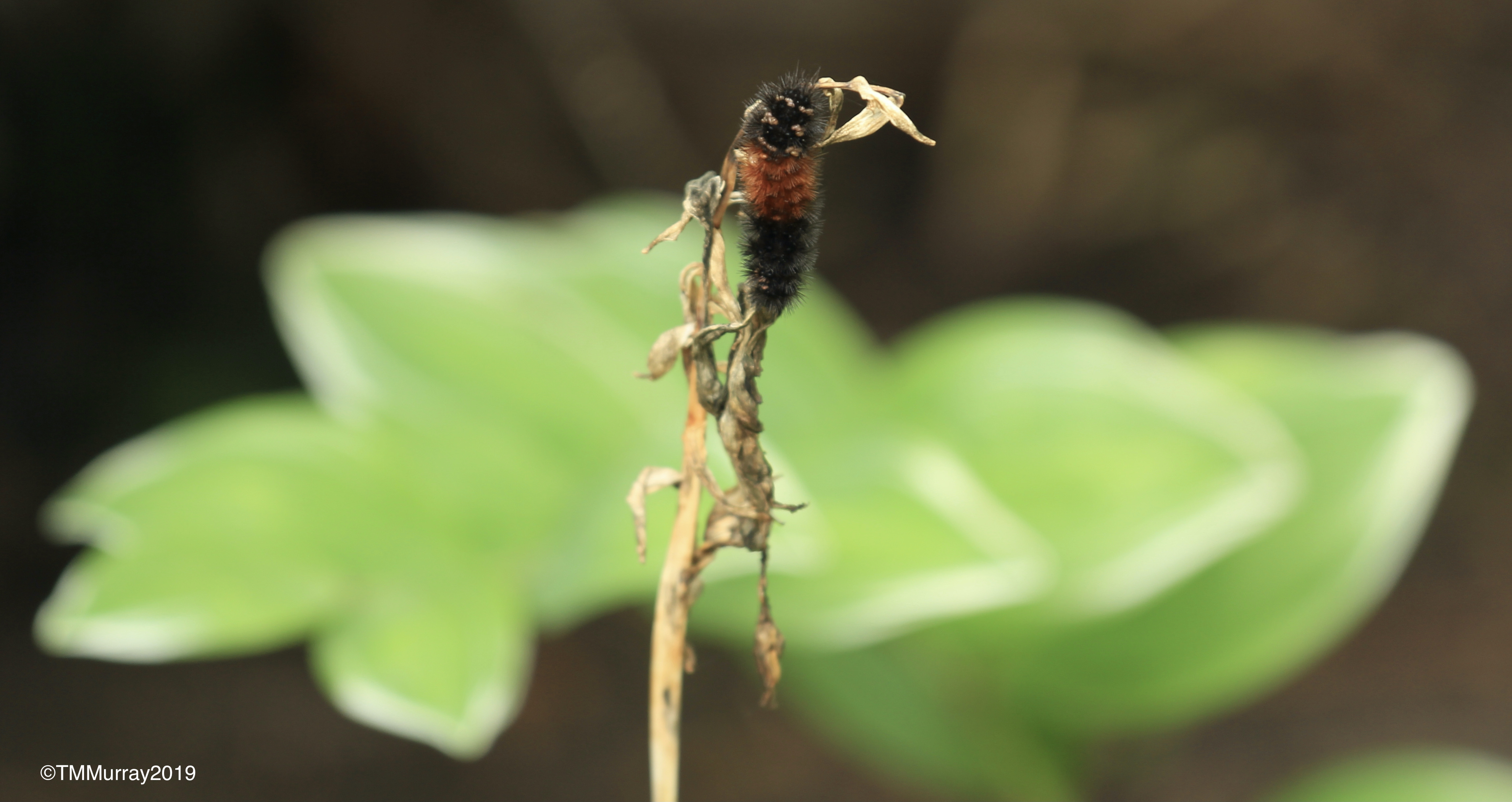
I found this little wooly bear asleep in the garden under a pile of fallen leaves and tucked it back in for the winter.
I miss the hum and activity of bees, butterflies and other insects that populate our garden. But, as I finished up some outdoor work, I was reminded that their absence is temporary. I spotted a familiar small, fuzzy form: a banded wooly bear caterpillar (Pyrrharctia isabella) asleep for the winter beneath some fallen leaves.
Though we usually call these little creatures wooly bears or wooly worms, there are more than 260 different species of them in North America. Each has a different coloration and becomes a distinct species of moth. The banded wooly bear is black on both ends with rusty orange in the middle. When the caterpillar reaches maturity, it becomes an Isabella tiger moth. Though I’ve seen many banded wooly bears, I have yet to see the moth, which is usually a muted orange, salmon or yellow color with black spots on its body and wings.

Wooly bears are generalists — they eat many types of plants including grass, clover and weeds. This one had just crossed the Lake Nokomis walking path in Minneapolis.
The banded wooly bear caterpillar grows up to 2 inches in length. Its fuzzy body is covered in tiny bristles called setae that are black on the caterpillar’s ends and rusty orange in the middle. The number of orange segments increases as the caterpillar grows. Though a few people might be sensitive to the bristles, most have no problems handling the caterpillars. I remember carrying them around as a child and holding them with our toddler son on nature walks.
Is it true that the size of a wooly bear’s orange band predicts the quality of the winter ahead? No, according to the sources that I read (please see the list below). Explanations include: the size of the orange band increases as the caterpillar grows; those with more orange grew up in a drier habitat and those with more black segments grew up where it was moister; lots of variety occurs naturally among caterpillar populations; and there’s plenty of disagreement among all of these views. In spite of the arguments, it’s fun to observe, compare and chart the size of wooly bears bands — especially with children!
Banded wooly bears in Canada and the northern United States typically produce one brood each year, though two generations are possible. Those that hatch in August feed until late autumn. They eat a broad range of grass, weeds and wildflowers, and aren’t crop pests. In autumn, they enter quiescence (a type of insect dormancy) for the winter, usually in leaf litter, or under a log or rock.

Look for wooly bears on sunny, mild autumn days. This one crossed the Sakatah Singing Hills Trail in southern Minnesota.
How do they survive our harsh winter? They produce a cryoprotectant,¹ an antifreeze to prevent cells from rupturing when they repeatedly freeze and thaw. The bristles or setae also help the caterpillar to freeze on the outside first, protecting the inner organs. In the spring, each caterpillar will awaken from quiescence, resume feeding and spin its cocoon. About two weeks later, an adult Isabella tiger moth will emerge.
Banded wooly bears range throughout the United States, Canada and even into Mexico. You might catch a glimpse of them feeding in the spring, but it’s more likely that you’ll spot one in autumn when you’re out walking, biking, or working in your garden.

Sources List for Further Reading
Minnesota Department of Natural Resources
University of Wisconsin – Milwaukee: Bug of the Week Blog
¹The cryoprotectant is produced by other wooly bear species, too. In fact, the Arctic wooly bear (Gynaephora groenlandica) caterpillar has a life cycle that stretches over seven or more years! The Arctic summers are so brief that the caterpillars must feed and enter quiescence repeatedly for several years before gaining enough biomass to metamorphose into a moth. Overall, they spend 90 percent of their lives dormant and frozen! (For more about the Arctic wooly bear, follow the link above to the Scientific American Blog.)
